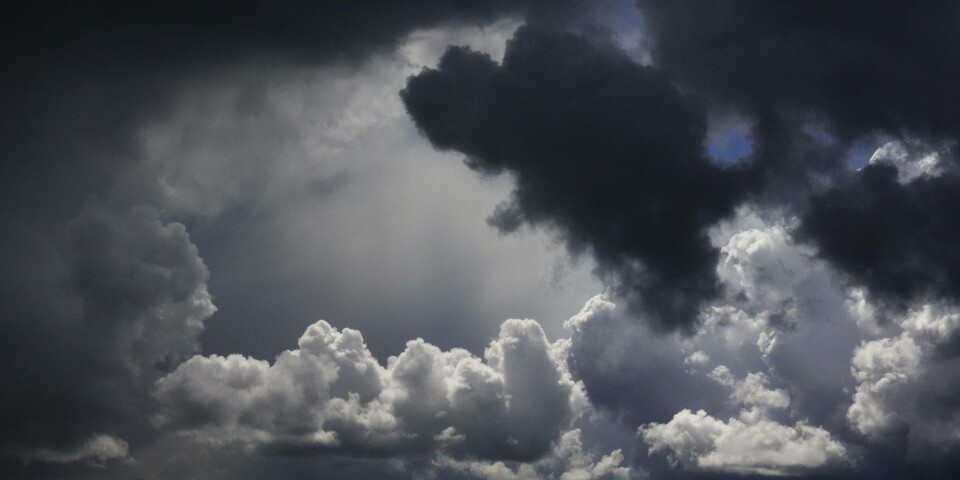THIS CONTENT IS BROUGHT TO YOU BY Oslo Metropolitan University - read more

Artificial intelligence can predict what the clouds will be like in the future
Knowing more about the development of cloud cover will also provide knowledge about the climate.
A warmer climate can affect the kind of cloud cover we get. The cloud cover can in turn affect the climate.
Low, heavy clouds reflect a lot of sunlight and can have a cooling effect on the climate, while thin clouds at high altitudes can capture heat radiation from the Earth, which leads to warming.
There is much uncertainty related to what the formation of clouds will be like in a warmer climate, and how much of the sky will be covered by them.
Changes in cloud cover can affect global warming, which in turn affects important resources such as agriculture and solar energy.
Machine learning makes it easier to predict cloud cover
Researchers from OsloMet, SimulaMet, and the University of Oslo have now developed a data set that can use machine learning to see connections between cloud cover over Europe and air temperature, air pressure and air humidity.
This can provide better forecasts of what may happen to the climate and cloud cover in the future.
“As far as we know, this is the first data set that can use machine learning to predict cloud cover,” Hugo Hammer says.
He is a professor at OsloMet, as well as a machine learning expert.
The dataset consists of satellite observations of cloud cover, in addition to observations of air temperature, air pressure, and air humidity.

The researchers propose a new technique that can link satellite observations, air temperature, air pressure, and humidity to specific geographical areas.
One challenge is that the satellites observe different parts of the Earth's surface at different angles. This causes the resolution to vary, and this technique compensates for this.
This particularly applies to observations of the cloud cover towards the poles, which receive lower resolution, while the best resolution and most observations are around the equator.
First to predict cloud formations in the future
Hammer sees many exciting issues related to machine learning and statistical methods in climate research and weather forecasting.
So far, machine learning, especially deep learning, has not been used that much in climate research compared to weather forecasting, for example.
“If we use a good climate model as a starting point, we can use our dataset to predict the degree of cloud cover in the future. For example, if a climate model tells us estimates of values for temperature, air pressure, and humidity in 2060, we can put these values into a model trained on our dataset to say something about the degree of cloud cover in 2060,” Hammer explains.
A similar example: If the climate model simulates up to the year 2100, researchers can take modelling of temperature, air pressure, and humidity for the year 2100, put it into the trained model, and make a prediction of cloud cover in the year 2100.
“We can't say how pressure and temperature will necessarily affect clouds, but we can say something about the extent to which different values of them appear at the same time as certain types of cloud formation,” he says.
Uncertainty in machine learning
“We can then learn that there are covariations between temperature, air pressure, and humidity on the one hand and cloud cover on the other,” Hammer says.
Covariation then means that certain values of temperature, air pressure, and humidity occur at the same time as certain types of cloud cover.
“However, our dataset is based on historical data. If the climate changes in the future, the relationship between temperature, air pressure, humidity, and cloud cover may also change. This could make a machine learning model trained on the historical data less precise," he says.
A weakness of machine learning is that when you enter data that is slightly different from what was used when the model was trained, it becomes more uncertain. It then becomes more difficult for the model to predict what will happen.
A hypothetical example: A model that has been trained with temperatures from 16 to 30 degrees that suddenly gets fed with 40 degrees will still predict the cloud cover. However, it will be less reliable without observations and available data to actually train on how the cloud cover behaves at 40 degrees.
The predictions will therefore always be somewhat uncertain. At the same time, the researchers’ dataset can contribute to better predictions. It provides more knowledge about the effects of temperature, humidity, and air pressure.
Temperature seems to be most important
Hugo Hammer says that temperature appears to be most important for predicting cloud cover, followed by humidity and air pressure.
Temperature is important for several reasons. Clouds form when moist air cools. The temperature is decisive in terms of how much water vapour the air can contain, and temperature at different altitudes in the atmosphere affects cloud formation.
Clouds have a high degree of humidity. Cloud cover is also closely related to air pressure, as clouds often form in areas of low pressure.
However, the relationship between these is complex and is affected by a number of factors.
Best to start from a limited area
Hammer explains that it is common to study a defined geographical area. In this case, Europe.
“Weather and climate can be very different in different parts of the world, and many issues arise if you try to do it on a global scale. Therefore, it's common to focus only on one area,” he says – and recommends other researchers use the dataset.
Reference:
Svennevik et al. A dataset for predicting cloud cover over Europe, Scientific Data, 2024. DOI: 10.1038/s41597-024-03062-0

This content is paid for and presented by OsloMet
This content is created by Oslo Metropolitan University's communication staff, who use this platform to communicate science and share results from research with the public. Oslo Metropolitan University is one of more than 80 owners of ScienceNorway.no. Read more here.
More content from OsloMet:
-
Researcher: Local government was key to managing the pandemic
-
"Norwegians practice a friendship version of a ‘one-night stand'"
-
"We need to talk about how we assess teacher students"
-
Cannabis use in Norway has increased: “Not everyone needs moral lectures or worried looks"
-
Many children with ADHD do not thrive at school
-
An out-of-control race: Why we fear artificial intelligence




































